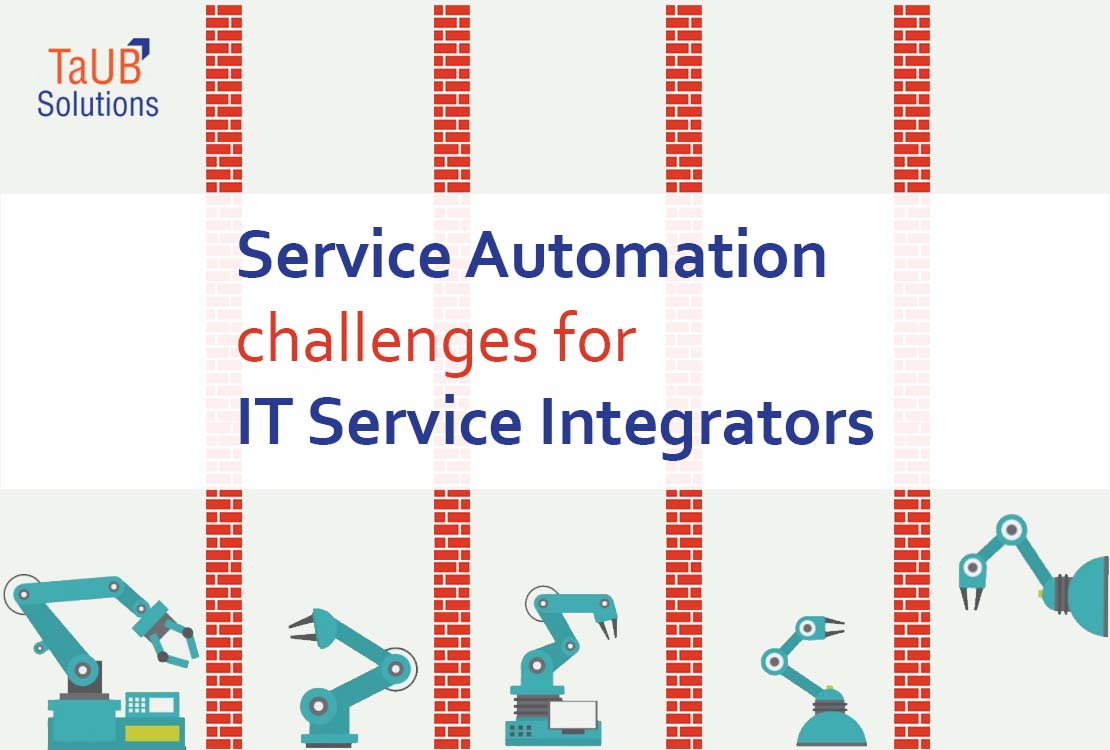Service Automation challenges for IT Service Integrators
Managed-Service providers struggle to show value for the cost spent in Automation efforts.
Business Performance Innovation (BPI) Network survey reported that 82% of IT professionals spend over half their time on emergencies and maintenance, while 17% estimated they spend more than 90% on mundane tasks. Automation is not helping to get a leap in value-added time spent. The key reasons are
- Silo Culture
- Building profound understanding of Users groups who consume its services
- Less to No availability of Feedback from the automated process
Silo Culture
Traditionally IT operation teams are organized based on the area of expertise like Network, Storage, Security. Service providers generally bundle their services into a single package to the customers but manage them internally by assigning tickets to the appropriate teams to accomplish the service. For example, if the customer wants the Virtual Machine setup, service providers assess the scope of work and create tasks for SysAdmin, Storage, Network etc., internally and complete them by routing the tickets from one team to another. Any standard requests are automated and non-standard or special requests go through multiple stage of analyze, design, create and verify process loops.
When service provider wants to move the type of work faster by automation, it needs to integrate all the automation created separately by each team. Integration would become a bottle neck as automated tools or scripts cannot talk with each other.
Understanding User Groups and Persona
Another biggest problem for IT Service Providers is the lack of exposure to the Persona of Users they work with. As Tickets are the way they interact, the remote operations team rarely get exposed to the end user. Due to this interactions with the end-user doesn’t build the trust factor which is required for long term relationship.
In my recent engagement with one of the major service providers, IT operations team job was to generate audit reports on the end users. These reports are automated through e-mails. Even though the automated process sufficed the need of the customer, customers were not satisfied and were quite uncomfortable in the audit reports. When we analyzed, we found that the end-users were bank auditors and expected high level of security and privacy due to their core nature or profession. The Trust factor improved just by password protecting the pdf attached in the email.
Less or no availability of Feedback from the automated process
Infrastructure as a code is a common term now. As teams automate the processes based on the initial ideas, the feedback to the automated process do not exist or lack providing qualitative information to optimize the automation. This results in challenges in re-usability, scalability and extensibility of the automation. To understand this challenge, organizations are spending huge effort in building ChatBots that would help them in reducing the human effort. As ChatBots are great, feedback on effectiveness of the ChatBots to solve the user problem are mostly left out or low priority feature.
Recommended Readings
Applying Conway Law
Building Value Stream Mapping
Visualizing the flow using Service Automation Blueprint.
Service Concepts
About the Author
Hari G, widely known for his keen analytical and product development skills, brings in 17 years of rich experience in execution of technology strategies and solutions that support company growth. As the CIO, Hari leads Agile, DevOps, Automation and analytics practices of TaUB Solutions.
Hari has extensive experience in user experience (UX/UI), Business Intelligence and Analytics, and building data-driven solutions using Agile methodologies





